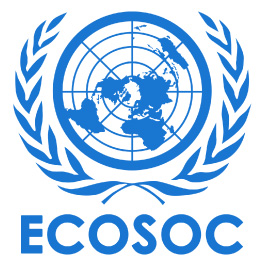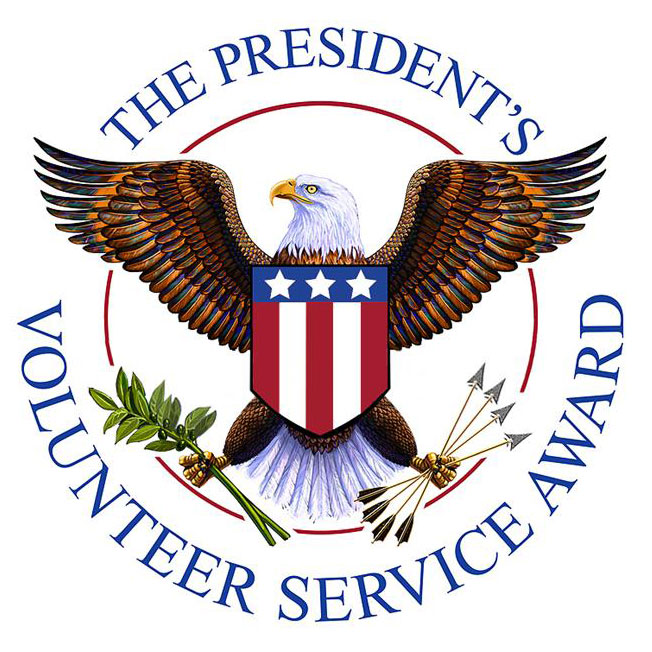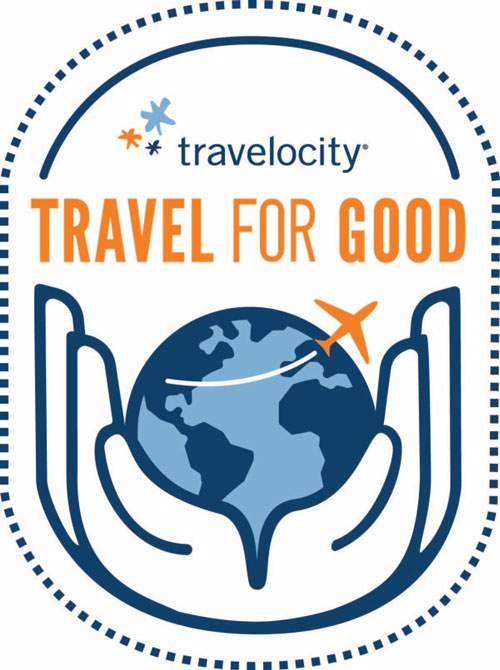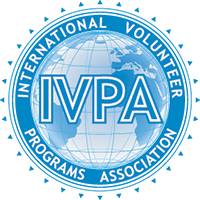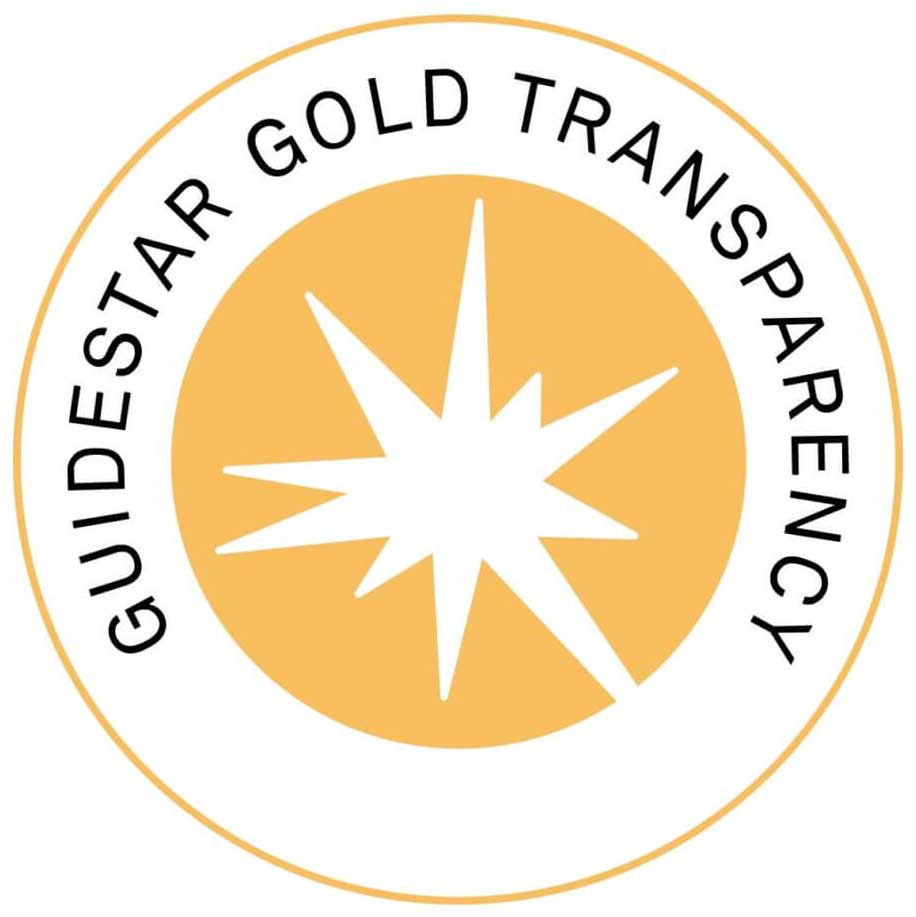PLEASE NOTE: MUST BE AGED 18 OR OLDER
The Hwange National Park game census, better known as 'the count', is southern Africa's longest-continually running wildlife census. The 2023 count was the 54th Annual Statis Pan count in the park. The concept is as simple as it is wonderful and (for some) challenging - to sit by a waterhole, spring, or stretch of river for 24 hours and do nothing but count every mammal that comes to drink. What makes the count truly unique is that the vast majority of folks who take part are ordinary people like you and me. You don't have to be a scientist to participate. However, for researchers based in and around Hwange, the annual census is a goldmine of information, particularly regarding the sightings of rare and endangered wildlife. It takes place in the fall when vegetation is at its lowest, so it is most accessible to see the animals with less brush. It occurs during a full moon to aid in observation at night. Being forced to sit still and record the comings and goings, drinking habits, conditions, species, age range, and sex of every animal wandering brings a new dimension to traditional game viewing.
The idea behind a 24hr static pan count is precisely to enable the Zimbabwe Parks and Wildlife Management Authority to get an idea of species distribution throughout the park, There are almost 300 volunteers taking part, almost all of them from Zmbabwe, apart from our Globe Aware group. They are split into 83 teams. Lots of other entities taking part to make all of this happen, such as SAVE the African Rhino Foundation of Australia and the Hwange Conservation Society UK Bhejane Trust, the Minister of Environment and Climate Change Hon. Nqabizitha Mangaliso Ndlovu and the Zimbabwe Parks and Wildlife Management Authority. All entities are working together as well to ensure the Park and its wildlife are provided with much-needed tanks, solar panels, tools, fuel, spare parts and borehole pumps to guarantee the continuity of the most vital element: WATER.
VIEW ZIMBABWE GAME COUNT VIDEOS
The National Park was founded in 1929 and encompassed over 14,000 square kilometres. The north and northwest of the park are drained by the Deka and Lukosi rivers and their tributaries, and the Gwabadzabuya River, a tributary of the Nata River, drains the far south of the park.There are no rivers in the rest of the park, although there are fossil drainage channels in the main camp and Linkwasha areas, which form seasonal wetlands. The water sources from which animals drink are referred to locally as "pans." In these areas without rivers, grassy pan depressions and pans have formed. Some of these pans, such as many of the pans in the Shumba area, fill with rainwater, while others, are fed by natural groundwater seeps. Many of the pans are additionally supplied by water pumped from underground boreholes. There is a huge lack of water for which all animals and humans compete, causing conflict. Elephants destroy crops, hippos and lions kill humans walking long distances for water pumps, etc. This project is held to get a count for how many animals are in the park. The idea is that all animals will come to a water source at least once a day. Animal conservations desperately need this data to have a sense for Volunteers are assigned to a watering hole where they are stationed with a vehicle and coordinator. Volunteers must attend several video training sessions (or watch recorded zooms; we also have them as podcasts but the visuals are important) before the event and read the materials provided so they know what they are looking for. The money raised each year is administered by Wildlife Environment Zimbabwe to maintain and develop water sources in Hwange National Park.

As volunteers, we stay in pretty basic camps offering lodges with bedrooms, showers, kitchen and lounge. Sightings include Lion - a total of 122 in 2019, elephant - 46,000 2019, hippo, giraffe, Cape Buffalo - 5,200 2019, leopard, wild dog, cheetah, rhino and all the plains animals like zebra, springbok, impala, sable and multitude species of birds. This is not a game reserve that has fences.
REGISTER FOR THIS SPECIAL PROGRAM
What is included
Game fees, vehicle fees, fuel, accompanying coordinator, conservation fees, accommodations fee, Land Rover use fee, meals (basic), bottled water, instruction/orientation, celebratory braii. Medical insurance, few meals will be taken at the VERY simple game lodge, but others will be picnic style when in the field. It's a great time to bring some of your favorite snacks as there are only very simple offerings. You will be paying a $60 wildlife management fee direct upon arrival, separate from the game and vehicle fees we pay on your behalf.
We will keep couples and friends together. The spaces filling up quick. The Wildlife Management organization randomly assigns us our watering hole.
Schedule for 2025
- We recommend you arrive in Victoria Falls no later than Oct 4th. We recommend you spend at least one night before the program start date as we leave for game count around 11am on October 5th, the official program start date, we can help you arrange for that optional and extra night. We place 3-5 people per large vehicle for transfer to the game park. If you choose, we can arrange these extra nights (before or after) at approx. $150 per day at mid-range accommodation. We can also help you make arrangements for optional activities.
- October 5th, each small grouping of 3 to 5 will go in 4 x 4 by caravan to the park. It can take 3 to 6 hours to get to the park due to the condition of the roads. We will eat one meal along the way and dinner at the main camp, where we will have our last orientation training meeting. This is a great time to visit with many other Zimbabwe volunteers. They will be so spread out over the park the next day so that you will unlikely see anyone beyond our group.
- October 6th: Breakfast at the main camp. Our teams set out by caravan to the designated watering holes for the official 24-hour count that starts at noon (remaining luggage will stay in your room until you return the next day), where you will spend 24 hours engaging in the count. Your Land Rover (or equivalent) is your place to rest. Everyone at that watering hole will take turns being on watch. There are primitive bathroom facilities with a few watering holes, but others have only the bush. Be prepared that this is NOT a luxury environment. For these 24 hours, you will use your Land Rover as the place where you take turns napping, eating, etc. You are welcome to bring camp chairs, binoculars, etc. The game here is very passive and laid-back. That said, no taunting is tolerated, and we strictly stay in the cars after dark. That even means it occurs in the car if you need a toilet break.
- On October 7th, at Noon, your 24-hour game count officially finishes, we return to camp accommodations, bathe, rest, eat dinner, spend the final night at main camp game lodge
- October 8th after breakfast we drive back to Victoria Falls, which can take 3 to 6 hours depending on road conditions. This is when the program officially ends. Given extra time, we can visit some of our regular Zimbabwe program sites and schools along the way, where we have engaged in many projects and brought many donations. While in theory you could fly home on the 8th, it may be difficult to exactly arrange flights precisely, therefore we recommend staying an extra night, we can help you arrange this at additional expenses
- October 9th, the recommended departure day, we recommend you do not arrange flights home before noon on October 9th so that you have time to enjoy the surrounding sites (at the very least, the bucket list magnificent Victoria Fallas should be visited!) We can help you arrange mid-range accommodations at $150 per day if you would like our help for booking this extra day as well.
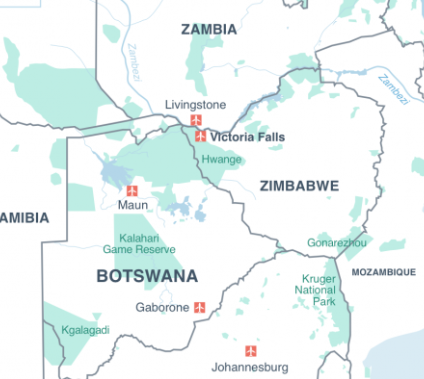 We do encourage spending a day or two at Victoria Falls on the front end or back end of the trip so that you can experience both the jaw-dropping waterfalls, helicopter rides cruise to see the Rhinos, Devil's Pool, a quick drive over the border to Zambia, and also the town itself. Also, if you have night vision equipment or satellite phones, this is one of those times they add a tremendous amount to the experience. Your orientation will include other recommendations such as neutral-colored clothing, sun visors, etc.
We do encourage spending a day or two at Victoria Falls on the front end or back end of the trip so that you can experience both the jaw-dropping waterfalls, helicopter rides cruise to see the Rhinos, Devil's Pool, a quick drive over the border to Zambia, and also the town itself. Also, if you have night vision equipment or satellite phones, this is one of those times they add a tremendous amount to the experience. Your orientation will include other recommendations such as neutral-colored clothing, sun visors, etc.
Every participant will be required to register and pay for membership in the local Wildlife Environment Organization to participate. ($60 per family, kids are considered anyone under 18) or $30 per single adult. ($60 per family, kids are considered anyone under 18) or $30 per single adult. The link to register is here For membership, they must choose: "Matabeleland," pick US cash, new member. Upon arrival, you will pay this fee directly to the wildlife organization since they are not set up to receive payments from the United States.
Safety and Security
The Victoria Falls area is very safe, and people are very friendly. Vaccinations are not mandatory, but you should consult your doctor for guidance. Nearby clinics and hospitals are easily accessible by car if necessary when in VF. At Hwange, things are further and more difficult, the town of Dete offers the 1st clinics, which depending on the pan we are assigned to, can be an hour or two drive. Volunteers will be part of a team led by Globe Aware personnel. For any safety-related inquiries or needs on the ground, please get in touch with our office. Consult your medical professional about any other recommended medications or vaccines such as yellow fever or malaria prophylaxis as we are not allowed to give advice in this area. We can say that most of the volunteers do not take these medications. You will NOT be there during the rainy season. It is normally 80s during day and 60s at night during the game count. You will want to be able to layer, so bringing layering items/hat/sunscreen in Land Rover is important.
The National Park where our game count occurs is the scene of an impressive wildlife spectacle in northwest Zimbabwe. The largest nature reserve in the country, it occupies around 14 600 square kilometers between Bulawayo and Victoria Falls. The vast expanse of Hwange is close to the edge of the Kalahari desert and consists of a variety of landscapes, including semi-arid areas, sparse woodland, grasslands, rocky outcrops and seasonal wetlands.
A safari to Hwange will deliver astonishing sightings of the 40 000 strong elephant population as well as the other members of the Big Five, the endangered African wild dog and rare species like roan and sable antelopes and even monitor lizards! It is also the only protected area in Zimbabwe where gemsbok and brown hyena occur in small numbers. Laying eyes on smaller nocturnal predators like servals, civets and bat-eared foxes can also be expected.
The skies above Hwange are filled to capacity with almost 400 different birds and the bateleur eagle, kori bustard and southern ground hornbill are just some of the most notable species. Combining a safari package to Hwange with an excursion to other top Zimbabwe destinations like Victoria Falls and Mana Pools National Park, or even the renowned Moremi Game Reserve and Chobe National Park in Botswana makes this area extremely popular with travellers to Africa.
REGISTER FOR THIS SPECIAL PROGRAM
Leisure Activities
If you decide to add extra days, we can take you to see the baobab trees, local markets, and daily options to choose from, such as armed Ranger's lead Game Drives and Game Walks in the National Park. Explore the awe-inspiring Victoria Falls, the world's largest waterfall, and engage in thrilling activities such as water rafting on the Zambezi River, Devils Pool, bungee jumping, and a Sunset Cruise on the Zambezi. Experience the breathtaking views with helicopter rides, microlight flights, and speedboat trips beneath the falls and from the railway bridge. For the daring, indulge in extreme activities like bungee jumping and zip-lining across the gorges, as well as white-water rafting. Alternatively, opt for more leisurely pursuits such as sunset cruises and luxury historic train dining. Moreover, the nearby Zambezi National Park is a haven for wildlife, hosting the BIG 5 and a variety of other mammals
Game Drives and Game Walks in the National Park are available daily with armed Rangers; visit magnificent Victoria Falls LEARN MORE - the world's largest waterfall, Water Rafting on River Zambezi, Bungee Jump, Sunset Cruise on River Zambezi.
Victoria Falls
Visitors to Victoria Falls will discover the true origins of its local name, "The Smoke That Thunders." The town is small and offers an eclectic collection of excellent restaurants as well as authentic curio markets. If you love to collect curio, you'll love the Victoria Falls curio markets.
The town of Victoria Falls provides adventure seekers with many adrenaline-pumping activities. Popular activities include a scenic Helicopter Flight, Flying Fox (Cable Slide), Gorge Swing, Bungee Jumping, Zip Lining, Bridge Slide, and Canopy Tour.
What are you likely to see?
Species recorded and the highest number of Animals: Of a possible 111 mammal species in Hwange National Park (189 species total Zimbabwe), 48 species were recorded compared to 44 last year. Of interest, a high number of 48 species were recorded in 2008. The most species recorded during this count were 16 at Scotts and Kennedy One in the Main Camp Area. the least number recorded was 2 - (314) Elephant and (2) Spotted Hyena at Mahoboti in the Robins Area. The highest number of animals recorded during the count was 2697 at Masuma Dam.
The total number of animals recorded during the count in all areas was 47,030 (compared to 39,929 / 2022 and 36,152 / 2021). There were 1,903 in the Safari Lodge/Forestry area, 27,495 in the Main Camp area, 9,281 in the Sinamatella area, and 8,351 in the Robins area.
SELECTION OF SIGHTINGS RECORDED DURING THIS YEAR'S COUNT:
- BROWN HYAENA: (3): 2/ Boss Long One - Main Camp area and 1 at Deteema Dam -Robins area.
- LEOPARD: (12) 1/Ganda Lodge: 10 Main Camp area: and 1/Manzimbomvu Robins area.
- CHEETAH: (4) 3/Chris' Pan and 1/Nyamandhlovu - Main Camp area.
- TSESSEBE: (14) 1/Sable Sands in the Main Camp area: and in the Robins area 3/Big Toms: 9/Deka Home Vlei: and 1/Reedbuck Vlei.
- WILDDOG: (11) At HSL/1 in the Forestry area, at Airstrip2 /2 and Mandiseka/2 in the Main Camp area and Tshakabika/6 in the Sinamatella area.
- AARDWOLF: (2) In the Main Camp area 1/Dom pan and 1/Kennedy One.
- AARDVARK: (1) At Madison in the Main Camp area.
- BUSHPIG: (4) At Manga 3 in the Main Camp area.
- KLIPSPRINGER: (3) At Deteema Seep in the Robins area.
- CARACAL: (1) At Scotts pan in the Main Camp area.
- CIVET: (2) At Deteema Dam/1 and Tsamhole/1 in the Robins area.
- STRIPED POLECAT: (1) At Makalolo in the Main Camp area.
- SERVAL: (1) At Tshebe Tshebe in the Main Camp area.
- GRYSBOK: (2) Tsamhole/l Robins area and Grassy Pan/1 in the Sinamatella area.
- LIONS: 144 Lion (including 4 cubs) were recorded during this year's count at 26 pans in the Main Camp, Sinamatella and Robins areas (although there is a larger population according to Lion Research), this compared to 97 last year at 22 pans: and of interest (four individuals and above). Main Camp Area: 4/Back Pan, 4/Caterpillar, 7/Grannies Pan, 16/Madison, 11/Nehimba Seeps, 12/Ngweshla, 14//Samavundhla, 4/Scotts, 6/Secheche and 5/Somalisa Main. Sinamatella Area: 6/Mandavu Dam West Robins Area: 5/Deteema Seep, 11/Dolilo, 9/Mahomahoma Seep 2 and 11/Tsamhole.
- GIRAFFE: This year 198 individuals were recorded (including 7 juveniles) at 38 pans throughout the park and Safari Lodge/Forestry areas) - last year 185 were recorded: for your interest, four individuals and above: Main Camp Area - 14/Boss Long One, 5/Caterpillar, 5/Dopi, 5/Guvalala, 19/Kennedy One, 4/Kennedy two, 6/Little Samavundhla, 11/Mabuya Mabena, 19/Ngamo, 5/Nyamandhlovu, 10/Shapi and 4/Verneys. Sinamatella Area: 13/Camp Hwange, 4/Mashambo and 6/Shuma. Robins Area: 10/Big Toms B, 5/Bumbumutsa and 19/Deteema Dam.
- HIPPOPOTAMUS: 175 hippos (including 19 juveniles) were recorded this year at 20 pans/dams throughout the park (105 last year). Of interest four individuals and above: Main Camp Area: 6/Dom, 10/Livingi,14/Major, 11/Makalolo, 4/Nehimba pan and 5/Ngamo. Sinamatella Area: 15/Mandavu Dam East and 5/ Mandavu Dam West. Robins Area: 35/Crocodile Pools Hide.
- CAPE BUFFALO: 1594 Buffalo were recorded this year (including 21 juveniles) at 26 pans/dams throughout the park and Forestry areas: 3608 were recorded last year and 5963 the year before and of interest: Forestry area: 139/Bomani Lodge. Main Camp Area: 397/Madison, 76/Kenndy 2 and 302/Mbiza. Sinamatella area: 500/Mandavu Dam West. 86/Masuma. Robins: 61/Deteema Seep.
- ELEPHANT: elephants were recorded at all water points except for Robins Camp Weir (Robins area). Masuma Dam had the highest count of Elephant with1840. A total number of 29,990 Elephant (including 6,758 juveniles) were recorded throughout Hwange National Park, Safari Lodge and Forestry areas, with 710 (68 juveniles) in the Safari Lodge/Forestry area,19777 in the Main Camp area (4,619 juveniles), 4,655 in the Sinamatella area (962 juveniles) and 4,773 in the Robins area (1,091 juveniles). In comparison to 2022, a total number of 22254 Elephant (including 4257 juveniles) were recorded throughout Hwange National Park, Safari Lodge and Forestry areas, with 664 (118 juveniles) in the Safari Lodge/Forestry area, 14,813 in the Main Camp area (2704 juveniles), 3,994 in the Sinamatella area (921 juveniles) and 2,783 in the Robins area (514 juveniles). A total number of 47,030 animals were recorded this year - Elephants total 29,990 - Other Species total 17,040 - Elephants, therefore, represented 63.8% of the total number of animals recorded and remain the dominant species in the park. It is interesting that the Cape Buffalo, Chacma Baboon, Impala, Kudu and Burchell's Zebra combined total represented approximately 27% of the total count.
- TUSKLESS ELEPHANT: Of interest for research purposes, 18 tuskless elephants were recorded this year (19 last year). Main Camp Area: 3/F Somalisa Main, 1/F Mandiseka, 1/F Broken Rifle, 1/F Back Pans, 1/F Kennedy Two, 2/F Rays Pan, 2/F Little Makalolo, and 2/F Ngweshla. Sinamatella Area: 1/F Bumbusi Main Springs and 1/M Masuma. Robins Area: 2/F Manzichisa One and 1/F Crocodile Pools.
- OTHER SPECIES: As mentioned, the total number of Other Species is 17,040; over a 10-year period, the average is 17,673; therefore, Other Species remain constant year on year. Recordings show marginal increases in Bushbuck, Civet, Eland, Giraffe, Hippopotamus, Spotted Hyena, Impala, Vervet Monkey, Roan, Sable, Steenbok, Warthog, Blue Wildebeest, and Burchell's Zebra and declines in Cape Buffalo, Chacma Baboon, Civet, and Common Duiker.
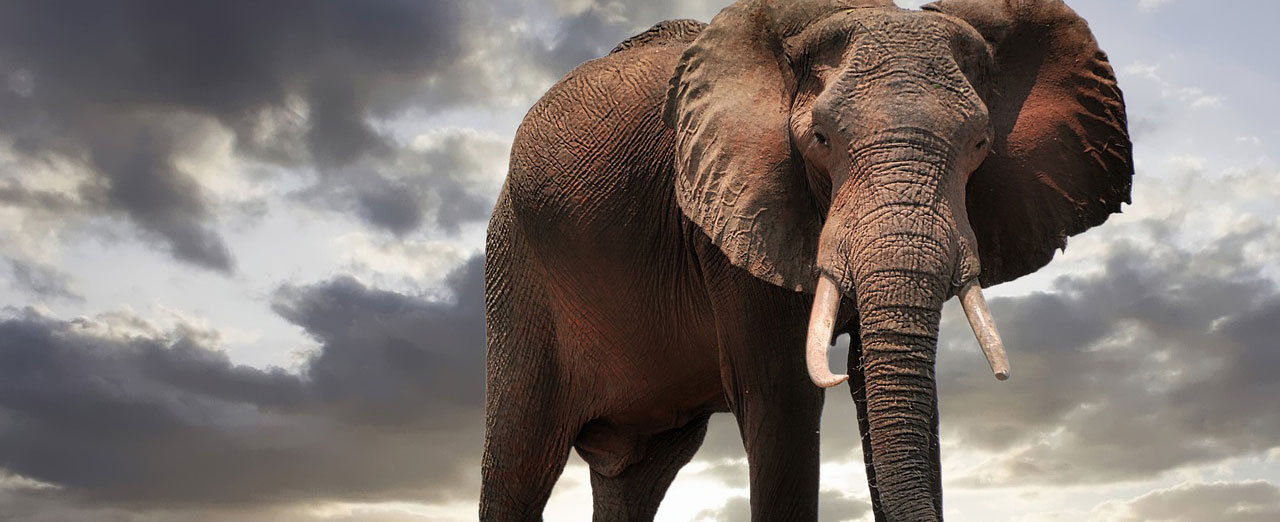
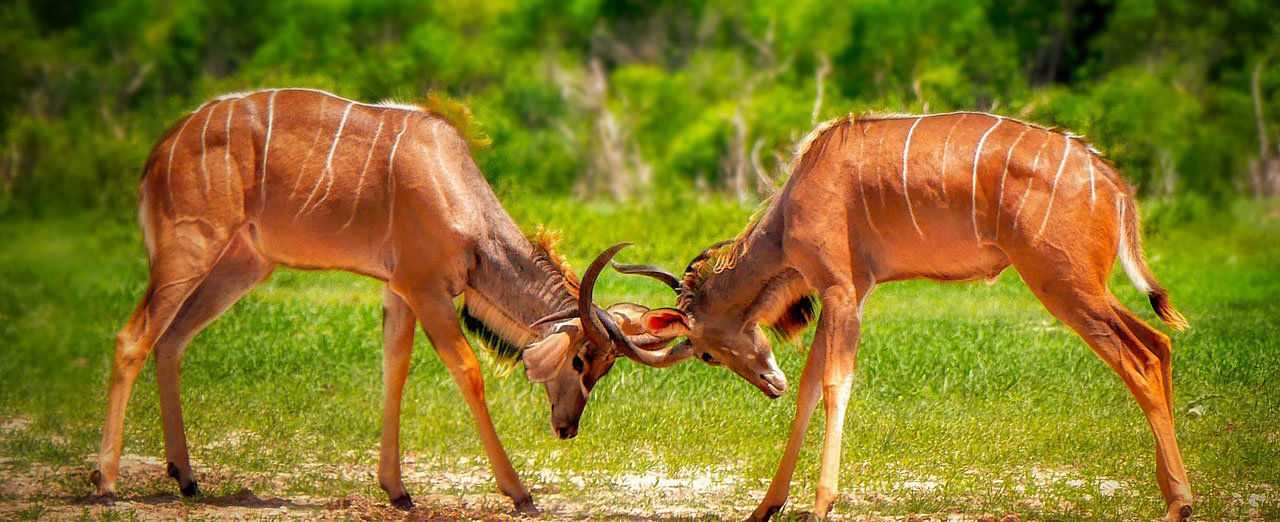

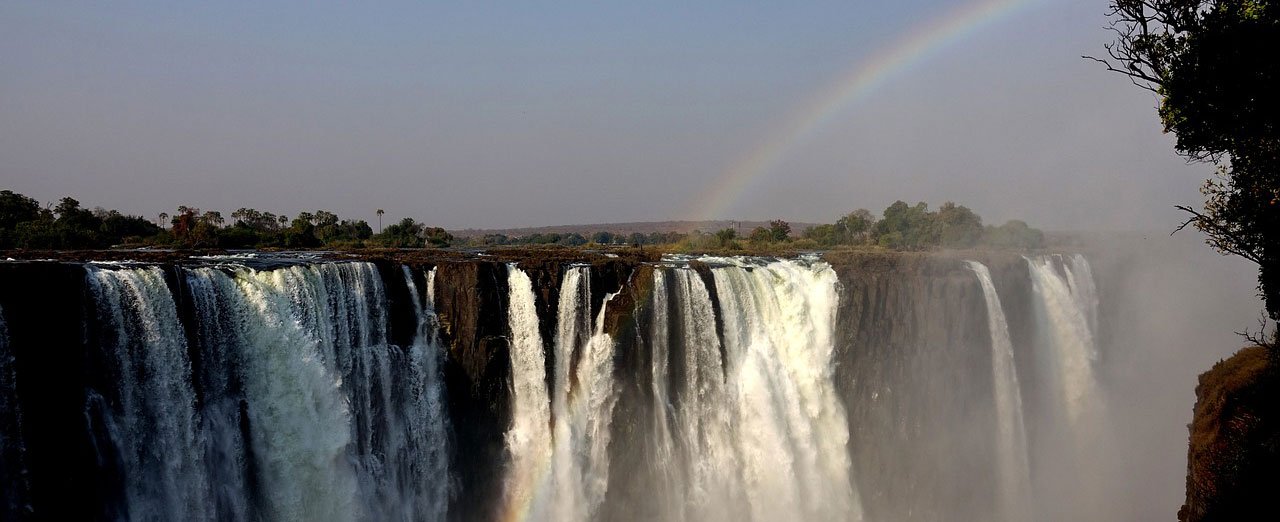

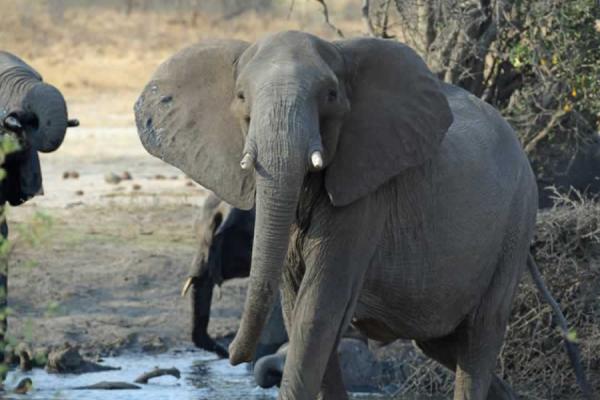
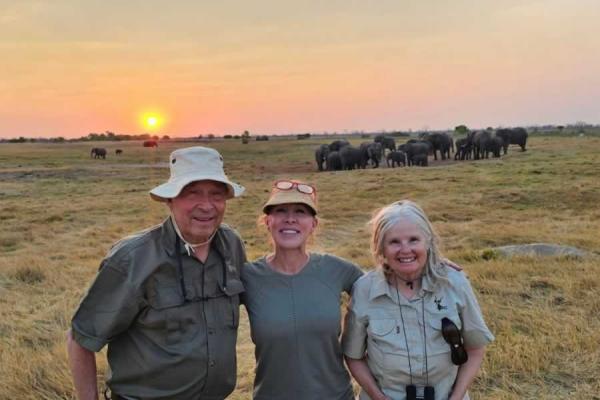
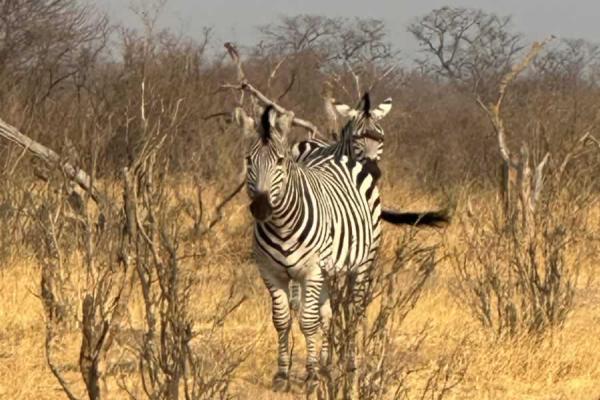
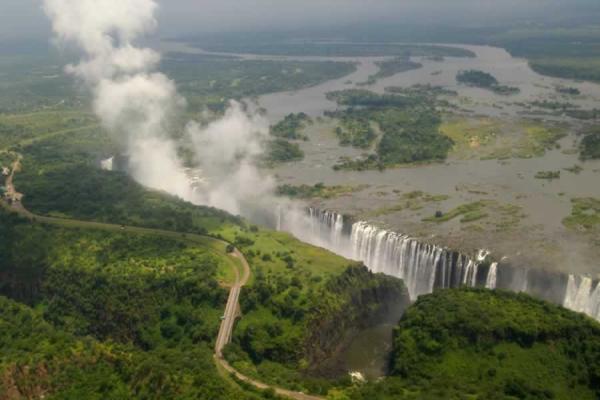
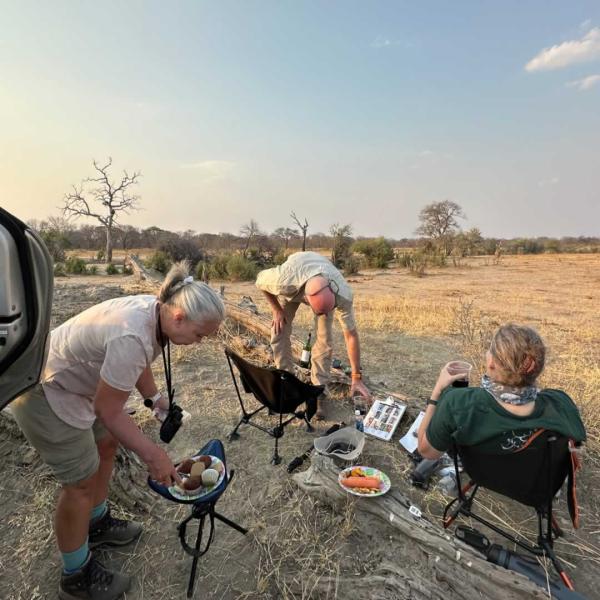

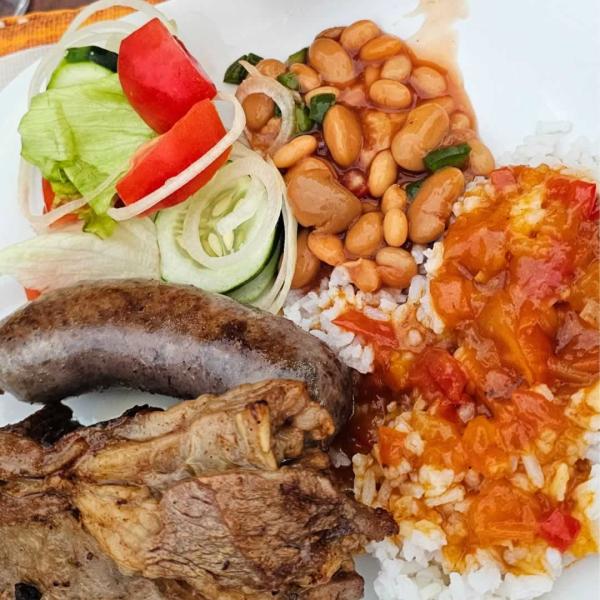

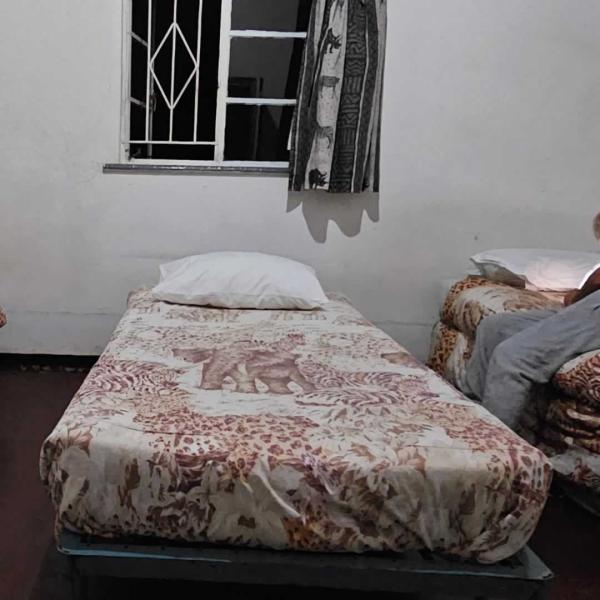
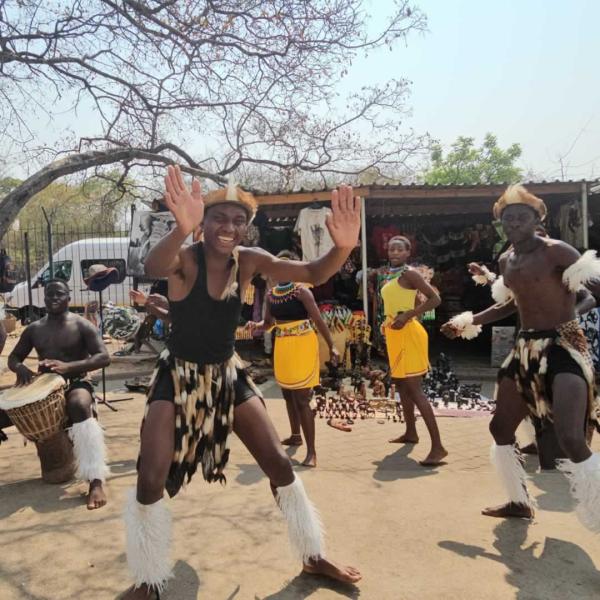
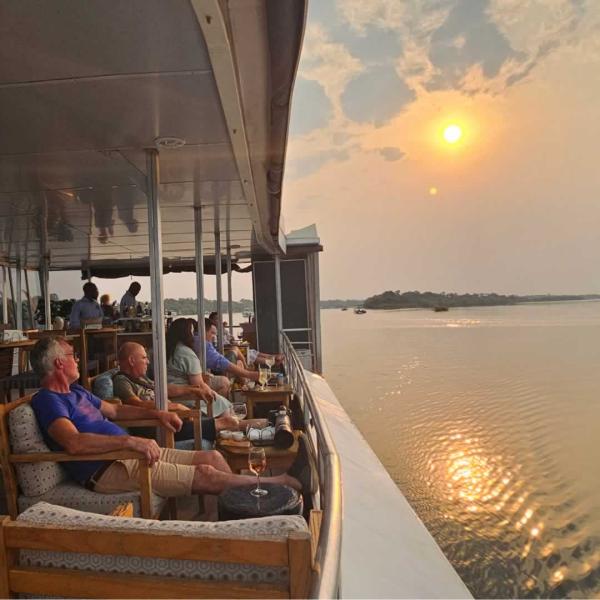
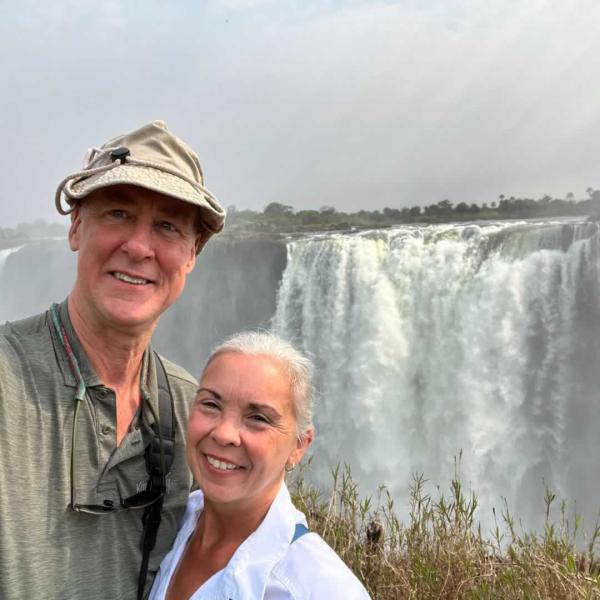
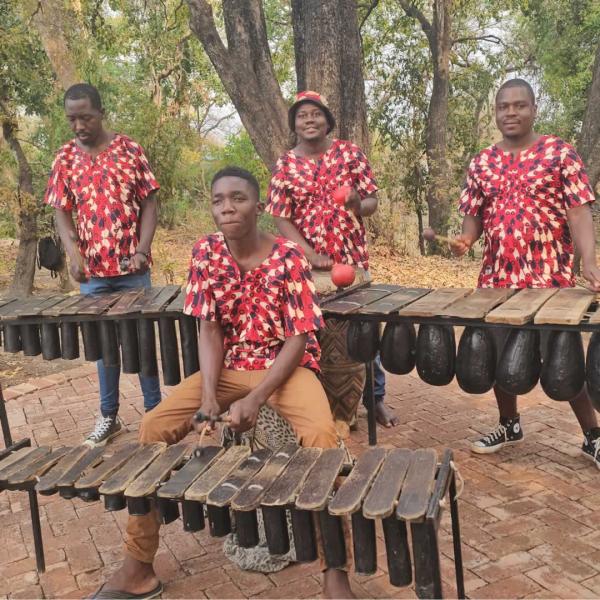
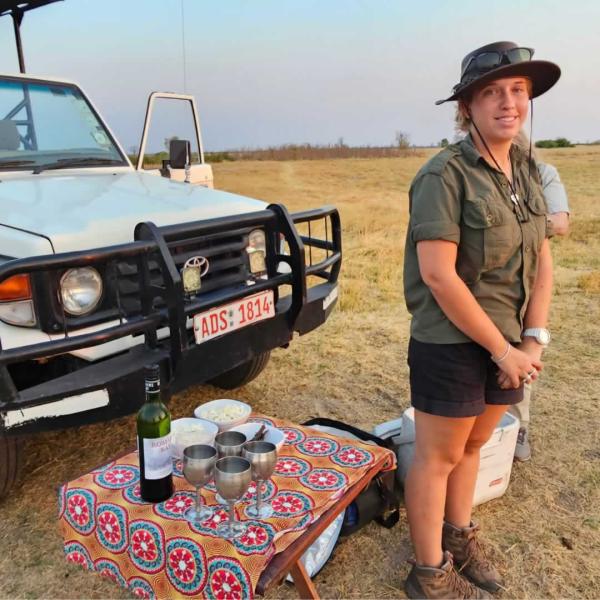
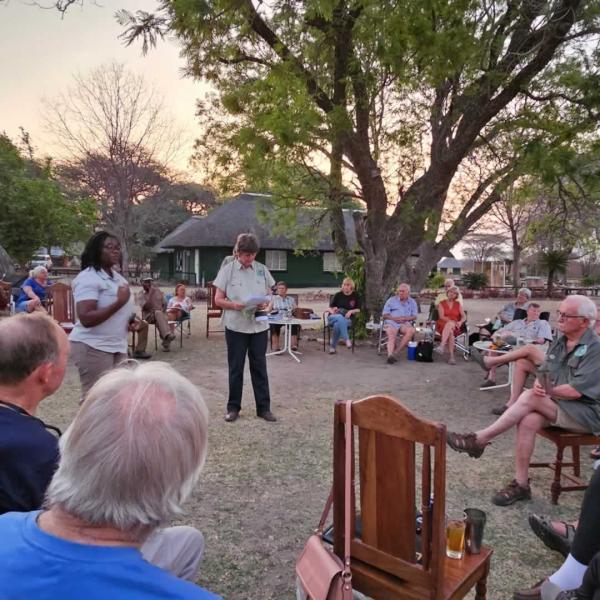
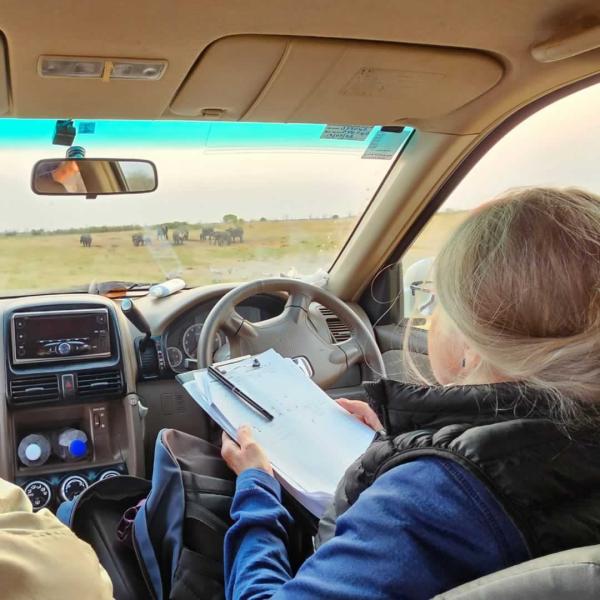
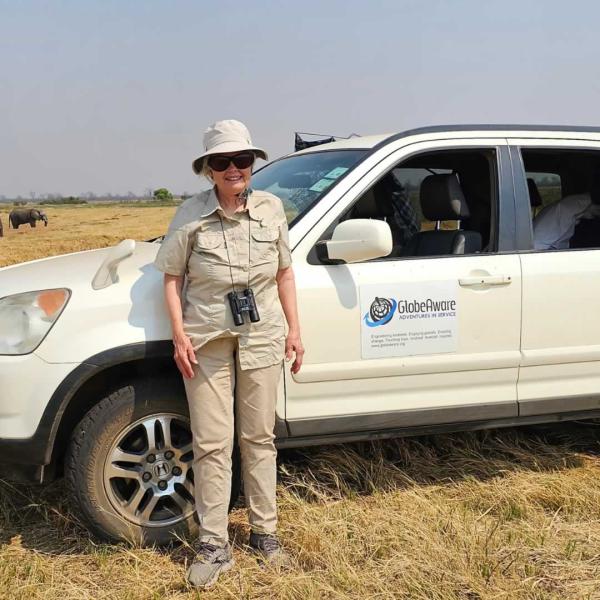
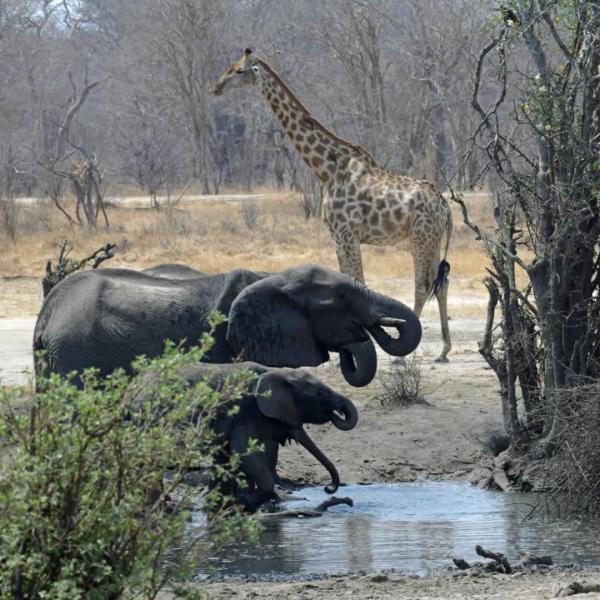

 The Hwange National Park game census, better known as 'the count,' is southern Africa's longest-continually running wildlife census. The 2023 count was the 54th Annual Statis Pan count in the park. The concept is as simple as it is beautiful and (for some) challenging - to sit by a waterhole, spring, or stretch of river for 24 hours and do nothing but count every mammal that comes to drink. What makes the count genuinely unique is that the vast majority of folks who take part are ordinary people like you and me. You don't have to be a scientist to participate. However, for researchers based in and around Hwange, the annual census is a goldmine of information, particularly regarding the sightings of rare and endangered wildlife. It takes place in the fall when vegetation is at its lowest, so it is most accessible to see the animals with less brush. It occurs during a full moon to aid in observation at night. Being forced to sit still and record the comings and goings, drinking habits, conditions, species, age range, and sex of every animal wandering brings a new dimension to traditional game viewing.
The Hwange National Park game census, better known as 'the count,' is southern Africa's longest-continually running wildlife census. The 2023 count was the 54th Annual Statis Pan count in the park. The concept is as simple as it is beautiful and (for some) challenging - to sit by a waterhole, spring, or stretch of river for 24 hours and do nothing but count every mammal that comes to drink. What makes the count genuinely unique is that the vast majority of folks who take part are ordinary people like you and me. You don't have to be a scientist to participate. However, for researchers based in and around Hwange, the annual census is a goldmine of information, particularly regarding the sightings of rare and endangered wildlife. It takes place in the fall when vegetation is at its lowest, so it is most accessible to see the animals with less brush. It occurs during a full moon to aid in observation at night. Being forced to sit still and record the comings and goings, drinking habits, conditions, species, age range, and sex of every animal wandering brings a new dimension to traditional game viewing.